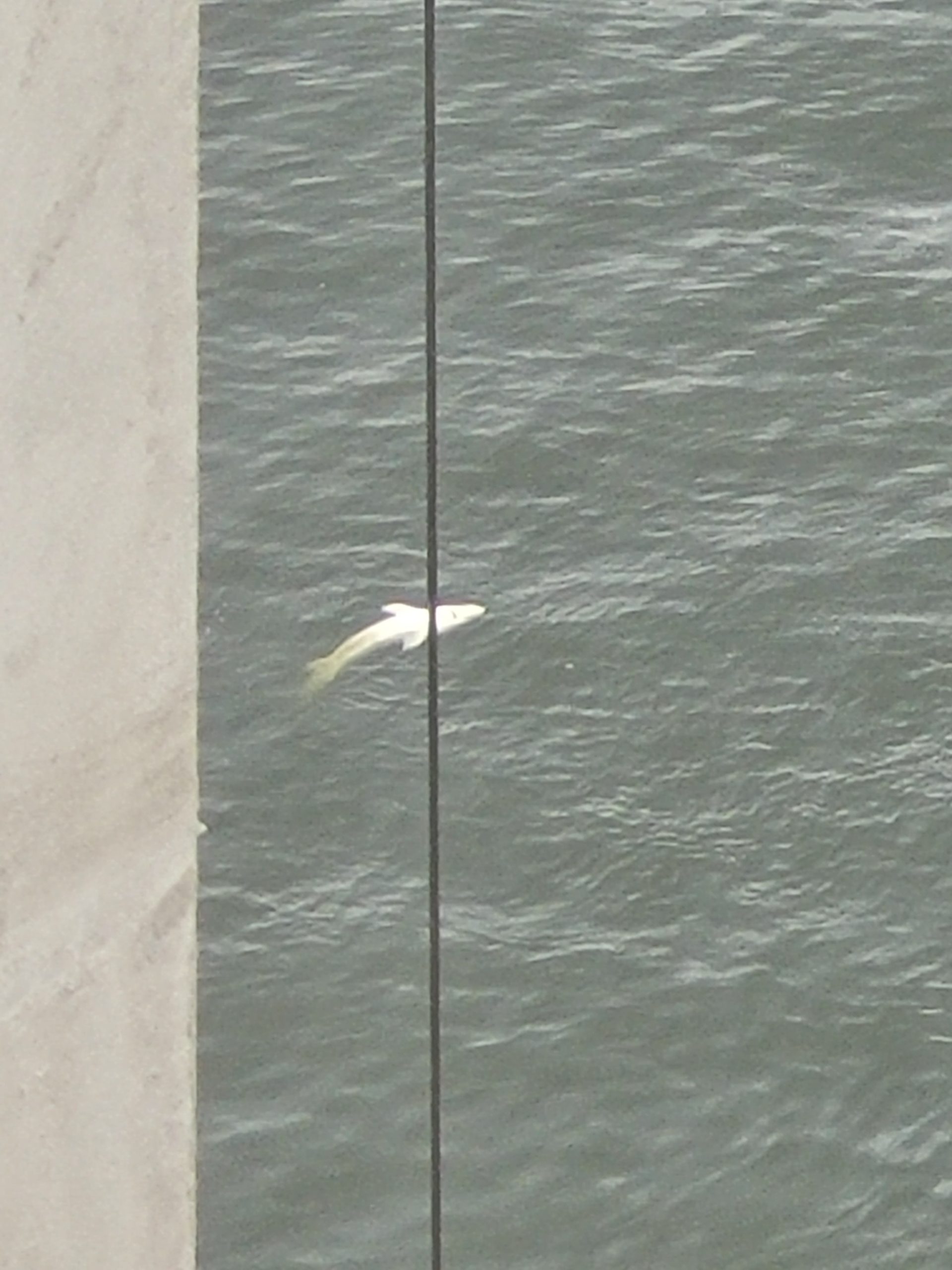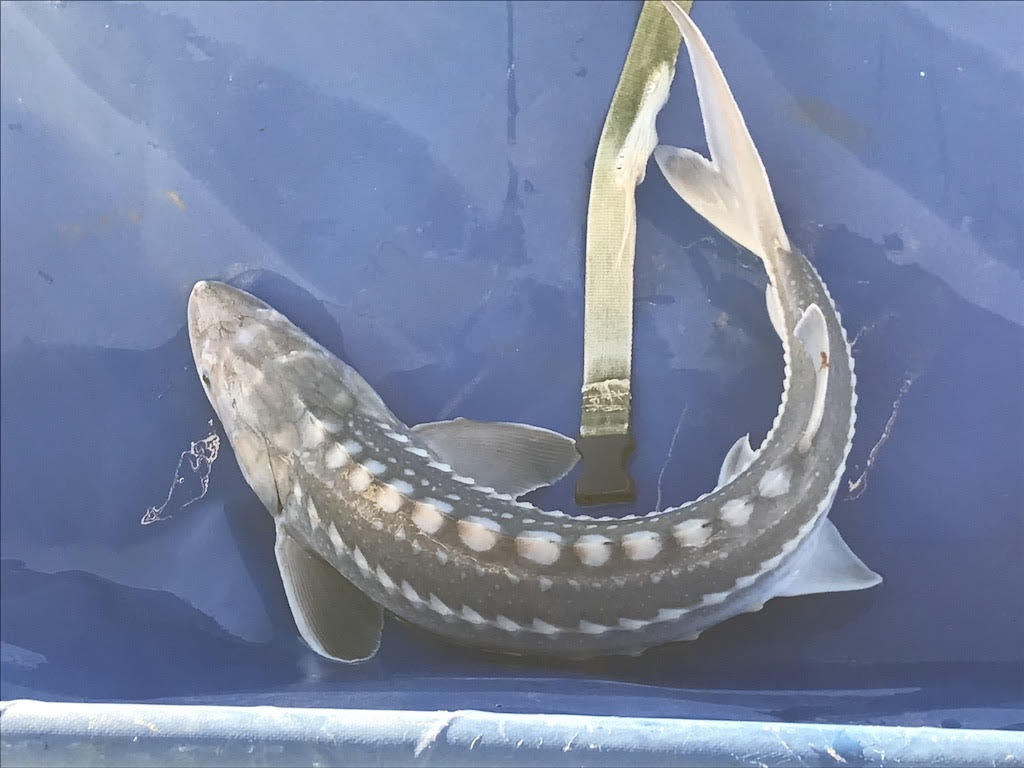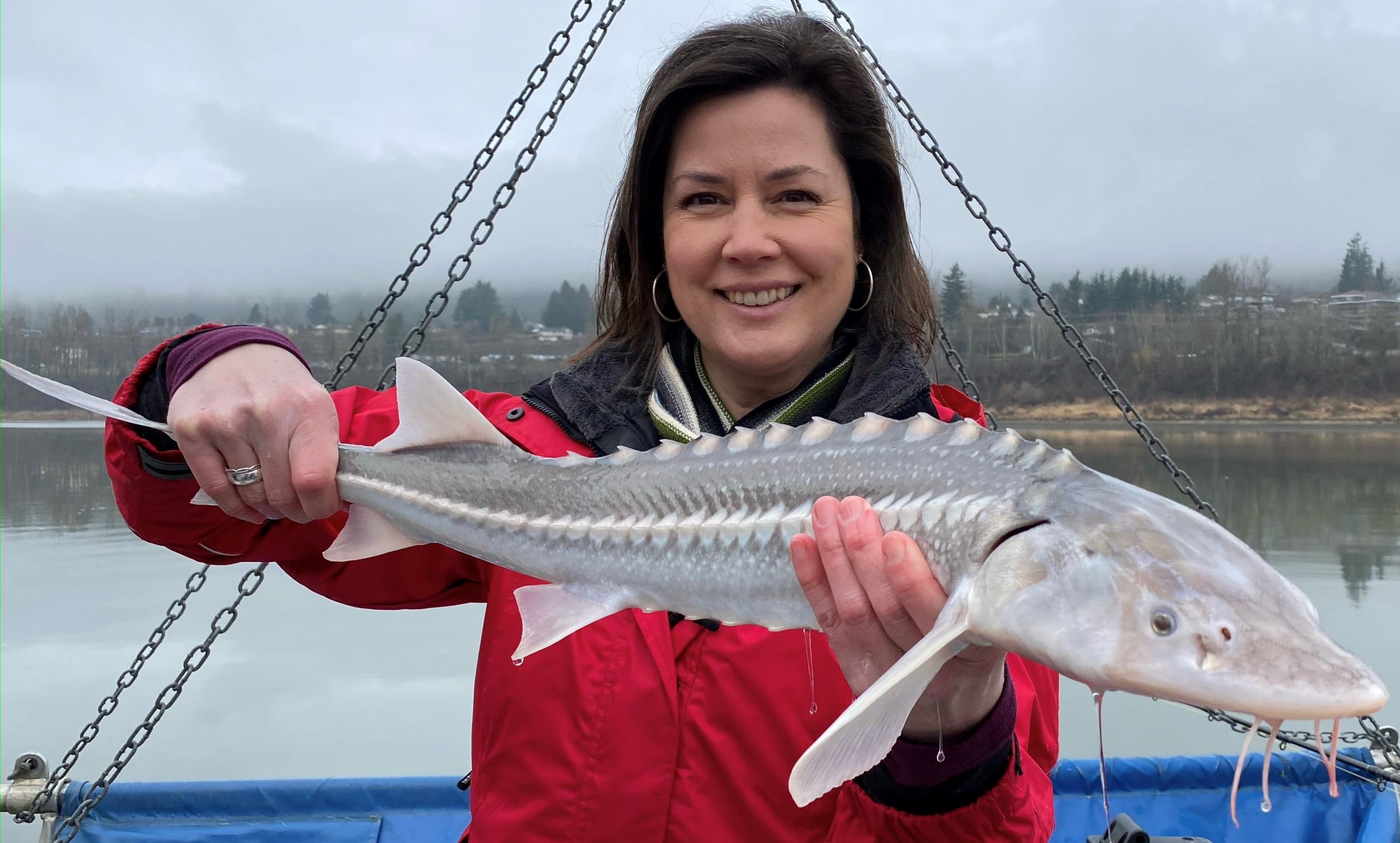Shark or sturgeon? Experts say animal spotted near Pattullo not of the Jaws variety
Posted March 30, 2023 3:21 pm.
Last Updated March 30, 2023 7:20 pm.
While working on the Pattullo Bridge this week, Gregg Pete wasn’t expecting to see what appeared to be a giant shark floating belly-up in the Fraser River.
“We were working quite far up in the air there, a couple hundred feet, when one of my coworkers actually noticed something floating down the [Fraser] River and pointed it out to us,” he told CityNews Thursday.
“We took the camera, zoomed in on it as much as possible and noticed that it was actually what looked to be about a four or five-foot shark floating belly up down the river.”

A Surrey man says he wasn’t expecting to see what appeared to be a giant shark floating belly up in the Fraser River while he was working on the Pattullo Bridge. But experts say the fish was likely a sturgeon, which is common in the area. (Submitted by Gregg Pete)
Pete says he saw some boats come up to the animal, with a crowd forming on land to see what the commotion was about.
“I have not seen any sharks in these waters,” he told CityNews.
Nick Dulvy, a professor at Simon Fraser University in the Marine Biodiversity & Conservation department, says the fish appears to be a sturgeon, though he adds a closer image could help identify the creature for sure.
“While there are freshwater sharks in the tropics and subtropics, there are no sharks [that] enter estuaries this far north,” he told CityNews by email.
He notes there are some very key distinguishing features that could help determine a shark versus a sturgeon.
“I’d look on the snout to see if there are the four flesh barbells that sturgeon use to detect their prey,” he said, adding he would also “look at the back of the head to see if they have a single curve slit or gill cover that defines bony fishes or whether they have the 5-7 gill slits that are found in sharks.”

FILE – A white sturgeon caught in the Fraser River. (Courtesy Fraser River Sturgeon Conservation Society)
Danny Kent, the curator of the Vancouver Aquarium Canadian Waters section, agrees a closer examination would 100 per cent determine what the fish is — but his vote is also closer to sturgeon.
“It’s not the best quality so it’s difficult to say 100 per cent but I would say, in my opinion, it’s one of two potential species. We’re seeing the underside of the front end of a fish — I can’t even tell the scale on it — but I would say it’s either a white sturgeon or possibly a dogfish — both of those are possible species in the Fraser River near the Pattullo Bridge. The sturgeon is probably the more likely of the two but it could potentially be either one,” Kent explained.
He explains sturgeons are common in the area, adding they can live in both salt and fresh water. However, given where the fish was spotted, Kent says it’s not impossible for a dogfish to find itself in that location.
“The only reason I could even say it’s possible it’s a dogfish is that the Fraser River has what’s called a salt wedge — a lot of large river systems have that — where the tide is pushing salt water, which is more dense or heavier, underneath the freshwater that’s floating out of the river. So there is salt water trapped below the freshwater up the Fraser quite far. So there are marine species that foray into the river mouth and up the lower part of the Fraser … but it’s more likely a sturgeon,” Kent said.

FILE – A white sturgeon, found in the Fraser River. (Submitted by the Fraser River Sturgeon Conservation Society)
While the quality of the image leaves an air of mystery, in the view of the Fraser River Sturgeon Conservation Society, there’s no question as to what the unidentified animal is.
“To me, graininess and all, it looks like a Fraser River white sturgeon,” Sarah Schreier, executive director of the society, said with conviction.
“I think the shape of the head, the shape of the pectoral fins, the way the body is shaped, the way the belly of the fish is a little indented as you go down the body. It’s hard for me to see one of the most distinctive characteristics of the sturgeon, which is the tail, but that very pointy, sharkish like shaped head is also fairly telltale.”
‘The canary in the coal mine’
Schreier says white sturgeon are common in the Fraser River. She notes they’ve “been around for over 65 million years essentially unchanged.”
“They look just like the dinosaurs that they did before. They are a long-live fish — they can live up to 200 years old and be 20 feet. They are a very unique species, they’re an apex species which means they’re top of the food chain and they eat everybody else. So they’re really the canary in the coal mine when it comes to the Fraser River watershed and ecosystem because when they’re struggling there must be a lot going on in the Fraser that we need to be paying attention to as well,” she told CityNews.
They also play a vital role in the ecosystem, with Schreier saying they spend a lot of time on the river floor.
“They help clean up. They feed off of a lot of other species that have died or that are near that bottom, so they help as part of that process as well,” she said.

FILE – Sarah Schreier with the Fraser River Sturgeon Conservation Society holds up a white sturgeon. (Submitted by the Fraser River Sturgeon Conservation Society)
Sturgeons can grow up to be 20 feet, though the one Pete caught on camera this week isn’t anywhere near that size.
Schreier says she’s excited to connect with the Surrey man to find out more about where he spotted the fish.
“The Fraser River Sturgeon Conservation Society has been running its tagging program for well over 20 years and we collect samples on the fish that our volunteers encounter in the Fraser River … but we also are very keen to be able to sample fish that have died because they tell a story too,” she explained.
“If we can, and I appreciate this fish might not be in the exact same location as it was, but if I can find it then one of my volunteers can go down and actually scan it for a tag which then gives us more data, more information on what’s happened and the lifestory of this particular fish in the context of the population.”
Regardless of what it was, Pete says the sighting caught both him and others in his crew by surprise.
“I was quite shocked. It stopped our crew for a few minutes to just check it out,” he recalled. “We don’t see those kinds of things very often.”








